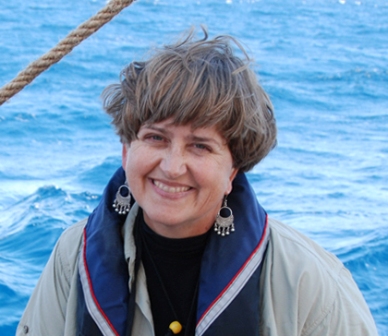Affiliation: Coastal Carolina University

Cheryl Ward is Director of the Center for Archaeology and Anthropology, and Associate Professor and Marine Archaeologist with Coastal Carolina University’s Department of History. She holds an M.A. and Ph.D. in Anthropology from Texas A&M University, and an M.S. in Bioarchaeology from the University of London’s Institute of Archaeology. Professor Ward specializes in maritime archaeology, ancient Egyptian ships, and archaeobotany. She has done fieldwork in Turkey (Uluburun and Cilicia), Egypt (Sadana Island, Lisht, Abydos, Wadi Gawasis), and in the Black Sea, Mediterranean, Red Sea, Gulf of Mexico, and Indian Ocean. Her recent publications include “Pharonic ship remains at Mersa/Wadi Gawasis” (International Journal of Nautical Archaeology 39.1, 2010).
Just as people use the finest ingredients available to manufacture perfumes and aromatic substances today, exotic resins and oilsfrom plant flowers and stems created a wealth of scents in ancient times. Pharaonic voyages to Punt on the Red Sea sought frankincense and myrrh. Ancient Egyptian poetry from the time of the pharaoh Tutankhamen opens a window into perceptions of perfumes and their power, and a ship that wrecked off the southern coast of Turkey offers up physical evidence of the importance of trade in aromatics at that time. Mycenaean palace bookkeepers, the writings of ancient naturalists, and even Egyptian love poetry bring us into the ancient world world, where simple techniques still practiced in the finest perfumeries transformed plants and plant products into gateways to paradise.
About 150 years ago, archaeologists uncovered spectacular images of an ancient journey on the walls of the pharaoh Hatshepsut’s funerary temple at Deir el Bahri. Five ships sail south and then north, heavily loaded with cargoes that include frankincense plants and resin, as well as apes in the rigging, back to Egypt and the pharaoh boasts no one made such a voyage in 450 years. She exaggerated a bit, as recent work at the ancient port of Saww has shown, but the meticulous portrayal of the ships and the people who crewed them helped me to lead a team that designed, built, and once again sailed a pharaoh’s ship on the Red Sea.
Long before Romans built ports to support their voyages to India and the mysterious Queen of Sheba reigned, the pharaohs sailed with some regularity to Red Sea anchorages that supplied them with raw materials. Copper mines, turquoise, lead along with frankincense, myrrh, and fish drew explorers and sailors to its rugged coastline. Even earlier, human ancestors crossed the Red Sea on their path to the Arabian peninsula and Asia. What were they seeking? How did expeditions survive harsh conditions and long supply lines? Where do written records—whether the proclamations of pharaohs or letters from lonely Roman soldiers on the frontier—meet archaeology to help us see the deep blue waters of the Red Sea through their eyes?
By the later 18th century, international markets and consumption patterns expanded traditional regional trading routes to complex systems encompassing vast areas of the world’s seas. Ottoman control of the Bahr al Ahmar/Red Sea limited European access to Red Sea ports and its products, especially coffee, and maintained a seasonally timed sailing schedule for huge ships that supplied the holy cities of Mecca and Medinah.
These ships, owned and operated by Egyptians, religious foundations, and the Ottoman government, served a community of Arabic-speaking peoples who shared a common cultural background that included Islam. Underwater survey and excavation of the Sadana Island ship provided new information about the high-value return cargoes these ships carried, including coffee beans, coconuts, and even Chinese porcelains. Government correspondence, diaries of explorers, merchant tax receipts and diaries, and the physical remains of the ship and its contents tell a fascinating story of early globalization.
Notifications